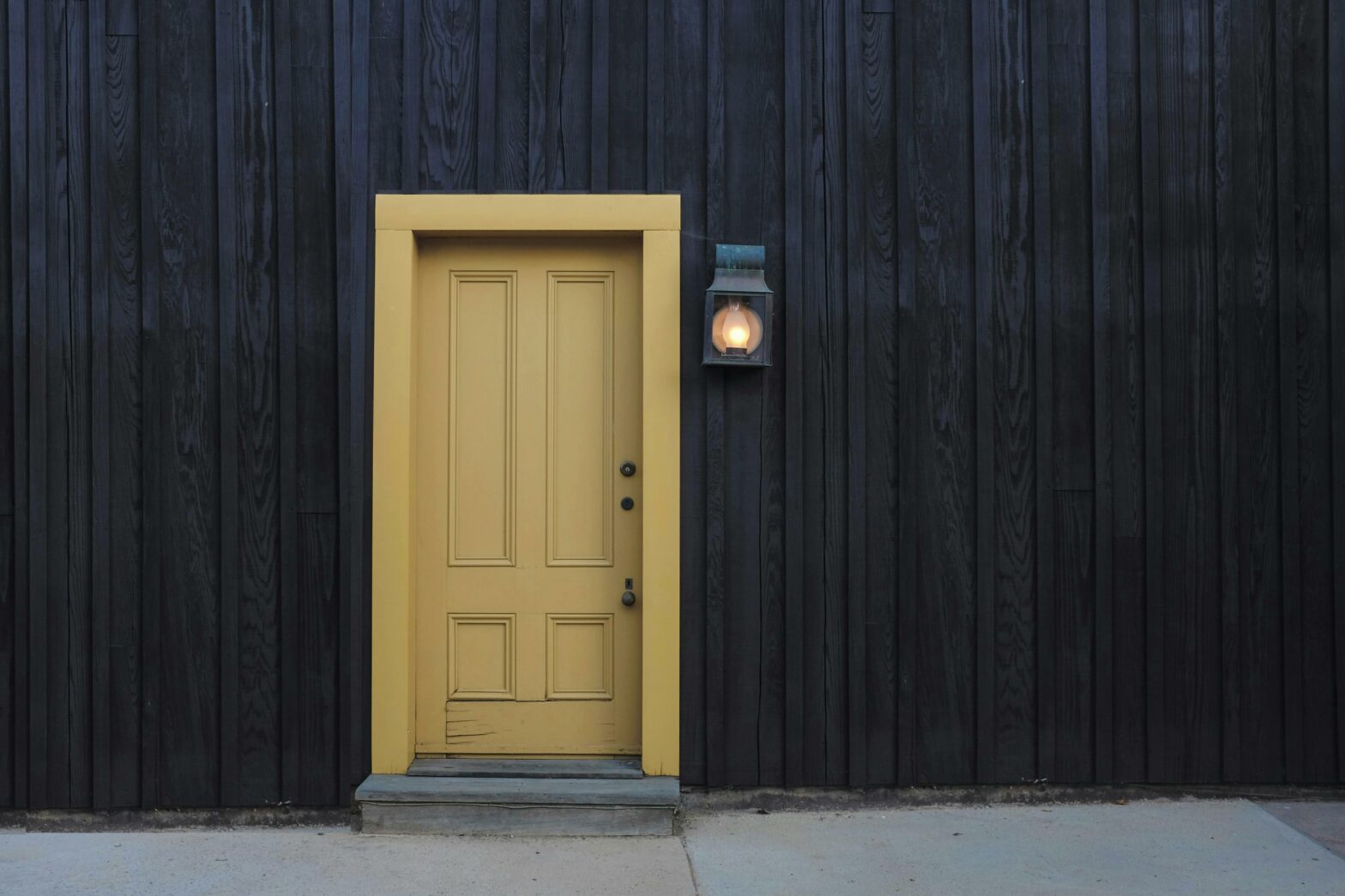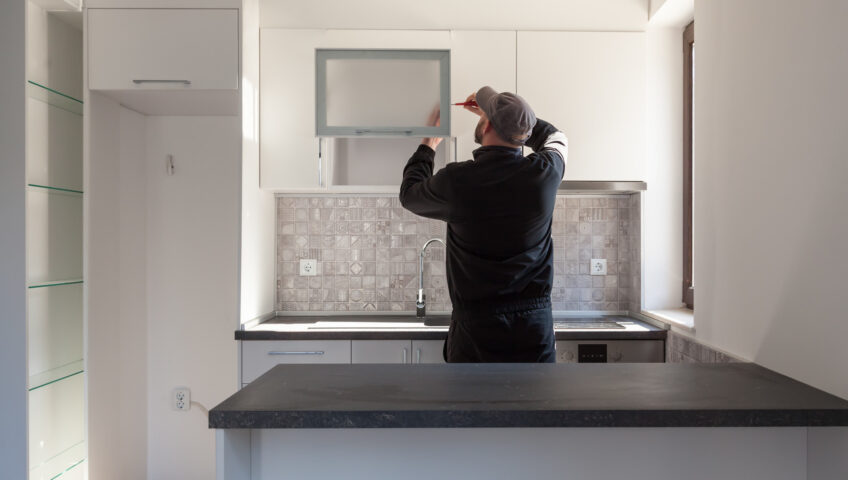
Turn Your Wall Into a Door – Functions, Materials & Sizing
At Load Bearing Wall Pros, we get a lot of requests to open up a space by having a more transparent wall that can open up fully or partially to bring more of the outside inside. To do this, we often recommend sliding aluminum doors to replace an exterior wall. We call this service “Wall To Door.” Not sure if this is the right solution for your exterior walls? Well, let’s talk about the benefits and different options for of making that wall a bit more interesting.
Types of Sliding Doors
There are two primary types of sliding doors: those that slide within the wall and those that slide outside of the wall. The key difference between the two is what allows the door to slide. Pocket doors are built within the wall, allowing them to entirely vanish when open. This creates a seamless and clean look. The second type of sliding doors relies on a track mounted directly on the wall’s surface. While they offer a smooth sliding motion, the door remains visible on the outside of the wall when open.

How To Build A Wall That’s Really a Door
An external sliding door is made up of a few main components. These include a track that the door glides on and an unobstructed wall that will allow the door to open and close freely.
There is no masonry work required for an exterior sliding door. If you don’t have enough room to place a counter-frame within the wall but still want a less obstructive door than a traditional hinged door, an external sliding door is the best option.
How do sliding doors on the outside operate? They’re incredibly easy to use: the door glides parallel to the wall on a track that may be mounted on the wall or the ceiling.
For the sliding door to function seamlessly, the wall it slides along must be clear of obstructions. This includes furniture, decorative items such as pictures, electrical outlets, or anything else that might get in the way.
We usually go for exterior sliding glass doors with aluminum frames and tracks. When the door is closed, there is more glass to metal than with any other option on the market.
Sliding Door Materials And Features
Black anodized aluminum sliding doors can be installed in multiple ways, matching the look and feel you want for your home. They can open to the right, to the left, or split in the middle.
Every installation includes insulated and double pane glass, which helps with energy efficiency. For the rolling parts, we often use steel and brass, which are reliable and long lasting. The frame design is minimalistic for a sophisticated, modern touch.
To prevent air and dust transmittance from the outside, the frames are also insulated, and we install a double sweep at the bottom of each panel.
Choosing the Right Material for Your Exterior Sliding Door
Although we stand by our choice of aluminum and glass for our sliding doors, when it comes to selecting an exterior sliding door, there is a wide choice of materials out there to choose from. Different materials offer varying levels of durability, insulation, aesthetics, and maintenance requirements. When it comes to aesthetics, there is no right or wrong way on how to build a wall with a door or a wall pretending to be a door, so to speak. Here are some common materials used for external sliding doors:
- Wood:
-
- Classic Charm: Wooden sliding doors imply timeless elegance and warmth. They blend seamlessly with traditional and rustic architectural styles.
- Insulation: Wood provides good insulation against temperature changes and noise.
- Maintenance: Regular maintenance is essential to prevent warping, rot, and fading. Proper sealing and finishing when installing are crucial.
- Variety: Various wood species (such as oak, mahogany, or pine) offer different grain patterns and colors.
- Aluminum:
-
- Sleek and Modern: Aluminum sliding doors are sleek, lightweight, and perfect for contemporary designs.
- Strength and Durability: Aluminum is corrosion-resistant, making it ideal for coastal areas.
- Thermal Efficiency: Look for thermally broken aluminum frames to improve energy efficiency.
- Low Maintenance: Aluminum requires minimal upkeep and won’t rust.
- Vinyl (uPVC):
-
- Affordable and Low Maintenance: Vinyl sliding doors are budget-friendly and require little maintenance.
- Energy Efficiency: uPVC frames provide good insulation and reduce heat transfer.
- Limited Color Options: While white is common, other color choices may be limited.
- Fiberglass:
-
- Strength and Durability: Fiberglass doors are sturdy, resistant to warping, and withstand extreme weather conditions.
- Low Maintenance: They don’t require painting and resist fading.
- Customizable: Fiberglass can mimic the look of wood or have a smooth finish.
- Composite (Wood-Clad):
-
- Best of Both Worlds: Composite doors combine the beauty of wood with the durability of other materials.
- Wood Interior, Aluminum or Fiberglass Exterior: The interior features real wood, while the exterior is clad in aluminum or fiberglass.
- Customizable Aesthetics: Choose from various wood species and finishes.
Remember that each material has its pros and cons, so consider factors like climate, aesthetics, maintenance, and budget when making your decision. Consulting with experts ensures that you choose the right material for your specific needs, allowing your exterior sliding door to enhance both functionality and curb appeal.

Are All External Wall Sliding Doors The Same?
Generally, the dimensions of external sliding doors vary based on the available width, the materials used, and the desired aesthetic impact; nevertheless, if we were to provide rough figures, the standard dimensions are 80 by 210.
You may find a wealth of instructions or recommendations online for installing a sliding exterior wall door yourself. However, we always recommend getting in touch with our experts to avoid making mistakes that might affect the door’s normal function, compromising your whole project.
Maximizing Space and Style: The Versatility of Collapsible Doors
Collapsible doors, also known as accordion doors or folding doors are extremely popular right now. They offer a space-saving solution similar to the modern style of sliding doors, but with a much more dramatic presentation. These doors are designed to fold and stack neatly against one another when opened, allowing for a wider opening without taking up too much space. This makes them an excellent choice for areas where space is at a premium or where a traditional swinging door would be impractical.
Functionality and Design: Collapsible doors are versatile and can be used in a variety of settings, from residential to commercial spaces. They are particularly useful in dividing rooms or covering large openings. Their folding mechanism is simple yet effective, consisting of multiple panels connected by hinges that glide along a track system. When opened, the panels fold in a concertina style, and when closed, they create a solid barrier that provides privacy and noise reduction.
Materials and Customization: Just like sliding doors, collapsible doors come in a range of materials, including wood, aluminum, vinyl, and fiberglass. Each material offers its own benefits in terms of aesthetics, durability, and maintenance. Wooden collapsible doors can add a touch of warmth and traditional charm, while aluminum or vinyl doors offer a more contemporary look with minimal upkeep.
Installation and Usage: Proper installation by a professional team will ensure smooth operation and longevity. Collapsible doors are easy to operate, making them accessible for users of all ages.
Advantages of Collapsible Doors:
- Space Efficiency: They require less space than traditional doors and are ideal for tight areas.
- Flexibility: Collapsible doors can be fully or partially opened, allowing for customizable room division.
- Variety: Available in various styles and finishes, they can match any interior design style.
- Ease of Access: They provide a wide opening, making them suitable for moving large items or for wheelchair access.
Considerations: When choosing a collapsible door, consider the size of the opening, the frequency of use, and the overall design of the space. It’s also important to think about the level of insulation and soundproofing required, as these factors can influence the choice of material and design.
Whether you’re considering sliding doors or collapsible doors, these innovative solutions offer a perfect blend of functionality and style for modern homes and spaces. Sliding doors, with their sleek design and space-saving attributes, can transform any room into an open, airy environment. They come in various materials – from classic wood to contemporary aluminum – catering to diverse aesthetic preferences and practical needs. In our projects, we choose to use aluminum and glass for a sleek aesthetic.
Collapsible doors, on the other hand, provide unparalleled flexibility in space management, allowing you to easily divide or open up areas as needed. Both options not only maximize your living space but also add a touch of sophistication to your interior and exterior design.
When embarking on a project to build a wall with a door, consider these innovative options. These are practical solutions for space constraints while enhancing the overall look and feel of your home. Remember, proper installation is key to ensuring smooth operation and longevity, so don’t hesitate to consult with professionals for the best results. Talk to us at 469-813-8143 or get in touch using our contact form to discuss your latest project!


